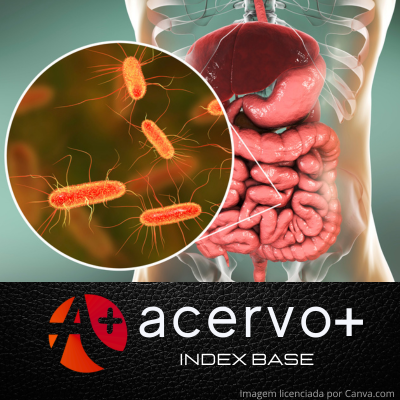Avaliação do período de tempo para o diagnóstico das doenças inflamatórias intestinais
##plugins.themes.bootstrap3.article.main##
Resumo
Objetivos: Avaliar o tempo para o diagnóstico das Doenças Inflamatórias Intestinais (DII) em um centro no nordeste do Brasil. Métodos: Estudo observacional, retrospectivo e transversal. Foram coletados dados nos prontuários eletrônicos do hospital, incluindo pacientes acima de 18 anos atendidos de 2013 a 2021 e com diagnóstico confirmado de Doença de Crohn (DC) ou Retocolite Ulcerativa (RCU). Resultados: Foram incluídos 678 pacientes, dos quais 346 tinham RCU e 332 tinham DC. O tempo para o diagnóstico das DII teve média de 24,8 meses e mediana de 9,0 meses (variação de 1 mês a 432 meses). A mediana do atraso no diagnóstico da DC foi maior para os comportamentos B2 (estenosante), com 12 meses, e B3 (penetrante), com 20 meses. A mediana do atraso diagnóstico de RCU teve resultados estatisticamente significantes (p <0,05) para a extensão da doença, com E3 (pancolite: 8,0 meses) < E2 (colite esquerda: 9,0 meses) < E1 (proctite: 9,5 meses). Conclusão: Os resultados deste estudo indicaram que o tempo para o diagnóstico das DII teve grande variação temporal e esses resultados foram influenciados pela extensão da RCU e pelo comportamento da DC. Esse atraso diagnóstico pode impactar negativamente no prognóstico das DII.
##plugins.themes.bootstrap3.article.details##
Copyright © | Todos os direitos reservados.
A revista detém os direitos autorais exclusivos de publicação deste artigo nos termos da lei 9610/98.
Reprodução parcial
É livre o uso de partes do texto, figuras e questionário do artigo, sendo obrigatória a citação dos autores e revista.
Reprodução total
É expressamente proibida, devendo ser autorizada pela revista.
Referências
2. ARIEIRA C et al. Clinical course in Crohn’s disease: factors associated with behaviour change and surgery. Scandinavian Journal of Gastroenterology, 2018; 53: 1222–1227.
3. BANERJEE R, et al. Emerging inflammatory bowel disease demographics, phenotype, and treatment in South Asia, South-East Asia, and Middle East: Preliminary findings from the Inflammatory Bowel Disease-Emerging Nations’ Consortium. Journal of Gastroenterology and Hepatology, 2022; 37(6): 1004-1015.
4. BARROS KSC, et al. Evolution of Clinical Behavior in Crohn’s Disease: Factors Associated with Complicated Disease and Surgery. Digestive Diseases and Sciences, 2017; 6(9): 2481–2488.
5. CANTORO L, et al. The Time Course of Diagnostic Delay in Inflammatory Bowel Disease Over the Last Sixty Years: An Italian Multicentre Study. Journal of Crohn’s & Colitis, 2017; 11 (8): 975–980.
6. DESAI D. Disease Behaviour in Patients with Crohn’s Disease: A Review. Gastroenterology & Hepatology: Open Access, 2015; 3 (2).
7. FEUERSTEIN JD e CHEIFETZ AS. Crohn Disease: Epidemiology, Diagnosis, and Management. Mayo Clinic Proceedings, 2017; 92 (7): 1088–1103.
8. GASPARINI RG, et al. Inflammatory bowel disease epidemiology in São Paulo State, Brazil. Clinical and Experimental Gastroenterology, 2018; 11: 423–429.
9. HERESBACH D, et al. Crohn’s disease in the over-60 age group: a population based study. European Journal of Gastroenterology & Hepatology, 2004;16(7): 657–664.
10. LAKATOS PL, et al. IBD in the elderly population: Results from a population-based study in Western Hungary, 1977–2008. Journal of Crohn’s and Colitis, 2011; 5(1): 5–13.
11. LIMA MARTINS A, et al. The prevalence and phenotype in Brazilian patients with inflammatory bowel disease. BMC Gastroenterology, 2018; 18 (1).
12. MAK WY, et al. The epidemiology of inflammatory bowel disease: East meets west. Journal of Gastroenterology and Hepatology, 2020; 35 (3): 380–389.
13. MOLANDER P e YLÄNNE K. Impact of ulcerative colitis on patients’ lives: results of the Finnish extension of a global ulcerative colitis narrative survey. Scandinavian Journal of Gastroenterology, 2019; 54 (7): 869–875.
14. MOREIRA AL, et al. IBD Epidemiology: What is Going on in the Developing World? Results from 163,000 Patients. Gastroenterology, 2019; 362(73).
15. NAHON P, et al. Incidence of Hepatocellular Carcinoma After Direct Antiviral Therapy for HCV in Patients With Cirrhosis Included in Surveillance Programs. Gastroenterology, 2018; 155(5): 1436- 1450.
16. OUAZ A, et al. Changes of Crohn’s disease phenotype over time. La Tunisie Medicale, 2016; 94(6): 167–170.
17. PARENTE JML, et al. Inflammatory bowel disease in an underdeveloped region of Northeastern Brazil. World Journal of Gastroenterology, 2015; 21(4): 1197–1206.
18. SAIRENJI T, et al. An Update on Inflammatory Bowel Disease. Primary Care, 2017; 44 (4): 673–692.
19. SIMIAN D, et al. Inflammatory bowel disease: A descriptive study of 716 local Chilean patients. World Journal of Gastroenterology, 2016; 22: 5267–5275.
20. KAPLAN GG e WINDSOR JW. Thefour epidemiological stages in the global evolution of inflammatory bowel disease. Nature Reviews, 2021; 18.
21. TORRES, U. DOS S. et al. The Montreal classification for Crohn’s disease: clinical application to a Brazilian single-center cohort of 90 consecutive patients. Arquivos De Gastroenterologia, 2010; 47(3): 279–284.
22. VICTORIA, C. R et al. Incidence and prevalence rates of inflammatory bowel diseases, in midwestern of São Paulo State, Brazil. Arquivos de Gastroenterologia, 2009; 46: 20–25.
23. VUCELIC, B. Inflammatory bowel diseases: controversies in the use of diagnostic procedures. Digestive Diseases (Basel, Switzerland), 2009; 27(3): 269–277.
24. WALKER GJ, et al. Quality improvement project identifies factors associated with delay in IBD diagnosis. Alimentary Pharmacology & Therapeutics, 2020; 52(3): 471–480.
25. YU YR e RODRIGUEZ JR. Clinical presentation of Crohn’s, ulcerative colitis, and indeterminate colitis: Symptoms, extraintestinal manifestations, and disease phenotypes. Seminars in Pediatric Surgery, 2017; 26(6): 349–355.

